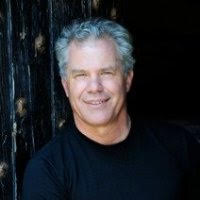As Bay Crossings’ readers know, a terrific new book was recently published containing “Tales from San Francisco’s Historic Waterfront, 1849–1934.”
Since then, Misfits, Merchants & Mayhem has been a critical success.
In an exclusive interview to be published in June, author Lee Bruno describes the creative process.
Bay Crossings: What inspired you to take on this project?
Lee Bruno: When I wrote my first book Panorama I came across a slew of oddball, fascinating San Franciscans who amazed me with their drive and zeal for taking on challenges in the face of amazing obstacles. What I found was a bounty of people from all walks of life who transformed our City, culture and institutions in many unusual ways.
BC: What particular stories should resonate with ferry riders?
Bruno: Two stories immediately come to mind. One of my favorites is about Tom and Dave Crowley who pioneered water taxi service in the late 1890s, growing it into the Red & White fleet ferry business and Crowley Maritime, both of which thrive today. I also think that Captain Thomas Gray’s personal story about how he started the first ferry service in 1851 from San Francisco to Oakland is fascinating.
BC: You are an avid swimmer. How does that inform your interests and writing?
Bruno: I really enjoy open water swimming in San Francisco’s bay waters. The challenges of the cold water coupled with the sea level perspective gained from riding the tides allows me appreciate the raw forces of the ocean and our wondrous shores. That experience of being on the bay often triggers my imagination and drives my curiosity to explore questions about our waterfront history.
BC: While doing research, were you particularly surprised by any discoveries?
Bruno: One story that surprised me was George Davidson’s and his pioneering coastal charting work for the United States Survey that began in 1869, just after the Transcontinental Railroad had been completed. His precision mapping efforts helped save countless ships from running aground. His life was emblematic of a true renaissance field scientist who braved harsh, physically demanding beach landings along rugged shores and accurately assessed and reported on the best locations for lighthouses along the Pacific coast. He left an impressive legacy as a pioneering surveyor, astronomer, and engineer and also helped establish the Lick Observatory and helped found the National Academy of Sciences.

